#Chenopodium album
Explore tagged Tumblr posts
Link
1 note
·
View note
Text

Filtering water used to clean edible goosefoot/lambsquarters seeds to save the toxic saponins for wool washing time
#yeen yelling#this isnt fully conprehensible yet so no main crafts blog yall get to see the chaos instead#exact species is chenopodium album
1 note
·
View note
Text
Hmm:

Regarding tenzu tablets:
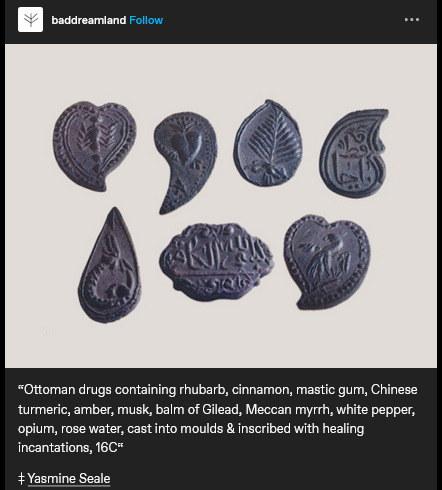
Caption reads: "Ottoman drugs containing rhubarb, cinnamon, mastic gum, Chinese tumeric, amber, musk, balm of Gilead, Meccan myrrh, white pepper, opium, rose water, cast into moulds & inscribed with healing incantations, 16C". Credited with a link to Yasmine Seale, on social media.
Original linked source doesn't mention where these particular tablets/molds were created, kept, displayed, etc. But I wanted to learn more and found a kinda recent summary of tenzu which was published by Nil Sarı (head of History of Medicine and Ethics Department at Istanbul University's Cerrahpasha medical school, president of Health History and Museology Association), which was presented at a conference in 2016:
Nil Sarı. "The Special Pharmaceutical Tablet “Tenzu” in Ottoman Medicine.” 7th International Congress for History of Islamic Medicine, October 24-28, Fez, Morocco, 2016: 24-28.
An excerpt of the text:
In Ottoman Turkish tenzu (tensuh) means "very rare beautiful thing" or "a box containing a variety of fragrances." Tenzu was also said to be the name of a place in Hitay (Eastern Turkistan / Xinjiang) where a medicinal clay - the main ingredient of the tablet tenzu - was imported from. Tenzu was a kind of theriac said to be effective against various ailments. Different tenzu prescriptions are noted in the texts [...] of several medical manuscripts of the 17th and 18th centuries. These tenzu prescriptions were described by various physicians, e.g. the head physicians Salih bin Nasrullah and Nuh Efendi as well as Hayatizade Mustafa Feyzi and Shaban Shifai who were palace physicians of the period. The special pharmaceutical tablet/pastille named "tenzu kursu" was formed in various shapes, i.e. oval, round, or rectangular. A measured amount of the drug preparation was compressed and shaped in a special brass mold named "tenzu kalibi" in Turkish. [...]
Prayers and ornamentations are engraved on the metal molds [...]. The expressions Deva al kulub (Drug for the heart) and Shifa al marghoob (The desired, yearned healing) inscribed on molds reinforce spirituality. [...] Inscriptions around the center of the other flower shaped pattern are Ferd, Hayy, Kayyum and feehi shifaun lin-naas (wherein is healing for mankind, Surah an-Nahl, verse 69). [...] Al-Hayy and Al-Qayyum are often used together. Al-Hayy signifies "ever-lasting life", and Al-Qayyum "self-existing life". [...] Sihhat bad (Have a good health) and Afiyet bad (Have a good appetite) are inscribed. [...] A. Suheyl Unver and Hayri Sozen published several tenzu prescriptions in their book "Turk Farmakaloji Tarihi I.", in 1960. [...] Tenzu prescriptions are found in several medical manuscripts kept in the Topkapi Palace Library, Suleymaniye Library and Istanbul University Rare Books Library.
Clay is a main ingredient [...]. Tiyn-i Tenzu is an unknown red colored clay. However, Terra Sigillata (Tiyn-i mahtum / muhurlu toprak) and Armenian Clay (Kil ermeni) are found in the prescriptions. [...] There are also animal products in the compositions, i.e. ambergris (amber), bezoar (badzehr), kermes (kirmiz), musk (misk), raw silk (harir-i ham / ham ipek), [...] and burnt deer antler (yanmisgeyik boynuzu). There are a wide variety of herbal drugs in the compositions, i.e. Acorus calamus [...], Aloe vera (Sabir), [...] Anchusa offinalis (Lisan-i sevr cicegi), Artemisia absinthium [...], Bambusa arundinaceae [...], Chenopodium album [...], Cinnamon (Darcin), Citrus aurantium [...], Crocus sativus (Za'feran), Embellia ribes [...], Gummi mastix [...], Heliotropium arborsecens [...], Nardustachys jatamansi [...], Potentilla reptans [...], Pterocarpus santalinus [...], Red rose/Rosa gallica [...], Rheum officinale (Ravend), Rumez acetosellaseed [...], Ruta graveolens (Keci Sadefi/Sedef Otu), Terminalia citrina [...], Terminalia chebula [...], Tormentilla (Tormentila).
Shaping and storage of these drugs are explained alongside some of the tenzu prescriptions. According to a recipe, all ingredients are beaten very thin on a porphyry (onyx marble) [...]. Each dose wrapped in gold foil is anointed an amount of almond oil. It is pressed into the mold, dried in the shade and stored in wood boxes. [...] Drugs in tablet form was an old tradition. In general, the preparation is poured onto a tray. [...] After dried in the shade, orange leaves are put between them. Stored in colored glass containers, they're reused when needed, squashed with water and drunk as a syrup. Also, flat pills made of a drachma weight were retained on the tongue in the mouth [...]. Although drugs in tablet form were used throughout Ottoman history either as a pastille or to be converted into syrup, the tenzu tablet molds were designed for the Ottoman sultans and members of the dynasty to make special tablets decorated with calligraphy [...].
[End of excerpt.]
All of these images are cropped screenshots of the PDF scan of the printed "conference works"; the PDF was uploaded online by Nil Sarı.


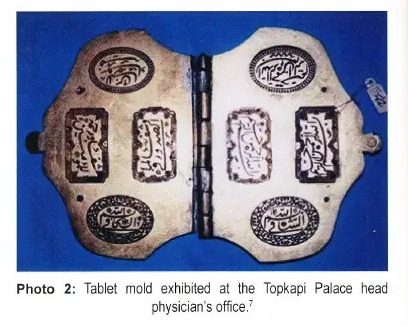


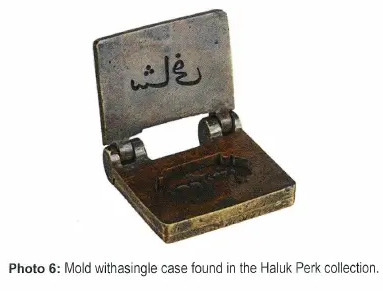
#sorry some of the non english is messed up because i had to transcribe the text myself from the image scans#also like that the Special Sweets Kitchen of the palace produced medicine
138 notes
·
View notes
Text
Plants for The Buried
Crab grass (Digitaria)
Wood sorrel (Oxalis)
Peppermint (Mentha × piperita)
Chickweed (Stellaria media)
Dandelion (Taraxacum officinale)
Canada Thistle (Cirsium arvense)
Bindweed (Convolvulus arvensis)
White Clover (Trifolium repens)
Nutsedge (Cyperus rotundus)
Japanese knotweed (Reynoutria japonica)
Lambsquarters (Chenopodium album)
Quackgrass (Elymus repens)
Curly dock (Rumex crispus)
Purslane (Portulaca oleracea)
Creeping charlie/Ground-ivy (Glechoma hederacea)
Broadleaf plantain (Plantago major)
Dove weed (Croton setiger)
Black medic (Medicago lupulina)
Spear thistle (Cirsium vulgar)
Ragweed (Ambrosia artemisiifolia)
Asiatic dayflower (Commelina communi)
Poison Sumac (Toxicodendron vernix)
Stinging Nettle (Urtica dioica)
Wild Madder (Galium mollugo)
#og.txt#popculture magic#paganism#pop culture paganism#tma paganism#tma pcp#the magnus archives#tma#the buried#the forever deep below
17 notes
·
View notes
Text

Lamb's quarter quinoa (Chenopodium album)
1. Place ½ cup dry seeds in a quart jar 2. Fill the jar with hot water for 15 minutes – stir from time to time. 3. Remove the water, transfer the seeds into a bowl, and add fresh warm water. You should have some decent foaming going on. 4. Keep changing the water until you don’t have any more foaming on the surface. 5. Transfer the seeds into a pot and add water. In this case, you’re NOT using the ratio of 2 parts water and 1 part quinoa which is the typical recipe for quinoa. We just want to boil the lamb’s quarter seeds for 20 to 25 minutes so you want enough water. I used around 6-7 cups of water for ½ cups seeds. 6. Drain and place the cooked seeds into a closed jar. Place in the fridge where it will keep for 4-5 days. NOTE: Don’t expect the end result to be like commercial quinoa, the lamb’s quarter seeds are much smaller and still somewhat crunchy but cooking them this way makes them quite edible with no bitterness.
8 notes
·
View notes
Text
FWIW lamb's quarters is an undomesticated plant (there is a close relative that was actually domesticated here, c. berlandieri, which is sadly now rare) but still gives a pretty okay volume of seeds, and if you happen to have a lot of it growing, then that's great!
If you don't have any immediately apparent where you are, it might also be worth looking into the amaranths (another pseudocereal crop, it's a bit more distantly related but all of these plants are in the amaranth family) and huazontle (another domesticated chenopodium that you can order seeds for online )
neither of which i've seen any weird ~superfoods~ hype over (and hopefully never will).
(i would also like to add as a note that chenopodium album, aka lambsquarters is native to europe. I don't think it's outright invasive, but I always like to point these things out anyways)
So I just learned something that pisses me off. Y’know quinoa? The ~magical~ health food that has become so popular in the US that a centuries-long tradition of local, sustainable, multi-crop farming is being uprooted to mass-produce it for the global market? Potentially affecting food stability and definitely effecting environmental stability across the region?
Ok, cool.
Y’know Lamb’s Quarter? A common weed throughout the continental US, tolerant of a wide variety of soil conditions including the nutrient-poor and compacted soils common in cities, to the point where it thrives in empty lots? These plants are close relatives, and produce extremely similar seeds. Lamb’s quarter could easily be grown across the US, in people’s backyard and community gardens, as a low-cost and local alternative to quinoa with no sketchy geopolitical impacts. You literally don’t have to nurture it at all, it’s a goddamn weed, it’ll be fine. Put it where your lawn was, it’ll probably grow better than the grass did. AND you can eat the leaves - they taste almost exactly like spinach.
This just… drives home, again, that a huge part of the appeal of “superfoods” is the sense of the exotic. For whatever nutritional benefits quinoa does have, the marketing strategy is still driven by an undercurrent of orientalism. You too could eat this food, grown laboriously by farmers in the remote Andes mountains! You too could grow strong on the staple crop that has sustained them for centuries! And, y’know, destroy that stable food system in the process. Or you could eat this near-identical plant you found in your backyard.
#I've harvested the seeds from lamb's quarters a couple of times#it's very hard to get the seeds clean of saponins and theyre very different from quinoa#I was never able to get them to stop tasting soapy#but the seed heads before ripening are pretty good and theyre highly nutritious#the seeds still seem worth harvesting though and probably would make an awesome bread inclusion (for when i get back into making bread
49K notes
·
View notes
Text
Eat it.

Delicious plant, Chenopodium album, known as lambs quarter or white goosefoot. Called Bathua as food crop in India. Closely related to Quinoa in the amaranth family.
1 note
·
View note
Text
6 root vegetables that are a must-have this winter
1- Sarson Saag (Mustard Greens): A Winter Delight
Mustard greens, called Sarson Saag in India, are a popular winter food. They are rich in vitamins A, C, and K and iron and calcium, which help the immune system and bones. Sarson Saag is made by cooking the greens with spices and served with makki di roti, a traditional winter dish in North India.
2- Palak (Spinach): Versatility in Every Bite
Palak, or spinach, is a versatile leafy green that thrives during the Indian winter. Rich in iron, vitamins A, K, and C, palak is a nutritional powerhouse. Whether added to curries, lentils, or enjoyed as a standalone dish like Palak Paneer, this green leafy vegetable contributes to overall health and well-being.
3- Bathua (Chenopodium album): Winter's Wild Harvest
Bathua is a leafy green full of nutrients and is often eaten in the winter. It has lots of vitamins A and C, iron, and calcium. People use it in parathas, curries, or yogurt to add flavor and nutrition during the cold season.
4- Methi (Fenugreek Leaves): A Flavorful Winter Herb
Fenugreek leaves, known as methi, have a unique flavor that enhances winter dishes. They are high in iron, fiber, and vitamins A and C, which aid digestion and help control blood sugar. Adding methi to theplas, parathas, or lentil dishes can make them tastier and more nutritious during the winter.
5- Amaranth Leaves (Chaulai): A Nutrient-Packed Green
Amaranth leaves, called Chaulai, are commonly eaten in Indian homes in winter. They are rich in iron, calcium, and vitamins A and C, which help with bone health and the immune system. People often cook them as sabzi or add them to dals for a healthy meal.
6- Radish Greens (Mooli ke Patte): Minimizing Food Waste
Radish greens are full of vitamins and can be cooked in many ways. Rich in vitamins A, C, and K, as well as calcium, radish greens can be sautéed, added to curries, or used in parathas. Including these greens not only adds flavor to your meals but also reduces food waste by utilizing the entire vegetable.
Also Read: Fruit Salad Nutrition Facts: Things I Wish I’d Known Earlier
What are the benefits of green leafy vegetables in winter?
Winter vegetables like root vegetables, cruciferous greens, and winter squashes are packed with important nutrients like vitamins A, C, and K, minerals like potassium and folate, and fiber.
Winter vegetables have lots of antioxidants. Antioxidants fight oxidative stress in the body, reduce inflammation, and protect cells from damage by free radicals.
Winter vegetables like Brussels sprouts and kale have lots of vitamin C, which helps strengthen the immune system. It is important in winter when the risk of getting colds and flu is higher.
Winter vegetables have fiber and potassium that help the heart by keeping blood pressure healthy and supporting the heart's function.
Conclusion:
Add these 6 leafy vegetables to your winter diet for a nutritional boost that meets your body's seasonal needs. Sarson Saag and Palak offer robust flavours and essential nutrients to keep you healthy and satisfied during the winter months in India. Embrace these winter greens to stay warm and healthy all season.
0 notes
Text
0 notes
Text
String identified: T ct aa t a tag t t “#at a” t… t t a t at tg. t gt a ’t cta g t ctca catgt. T ta t , t a, a t t - ct g a a ctt . T T t, t t a g t tat ' a c t tat ga t t c t. Tag t t a g t t ca a tg -t tagta, a t a, ", t' t acta a a tat…" A t gt a a tg t a, a ag t tat tagta, t t at " 't t t tat t gt a g t tg…?" a , ", t' t a a tat…" a atc t c tat a 't at a tag at.
Closest match: Chenopodium album genome assembly, chromosome: 19 Common name: White goosefoot
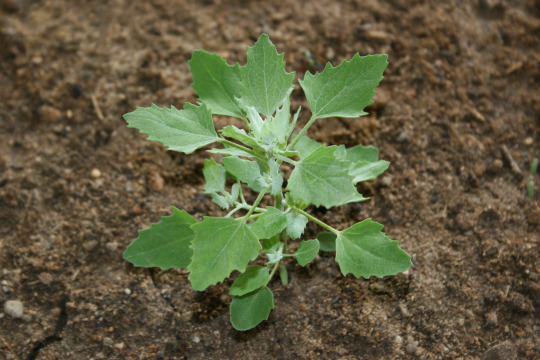
(image source)

Ok now do NYT columnists
#tumblr genetics#genetics#critical thinking#chatgpt#white goosefoot#plants#this is a cool plant actually. commonly eaten in india and nepal#and more commonly given to animals as feed
103K notes
·
View notes
Link
1 note
·
View note
Text
Diagnostic accuracy of skin prick test and specific IgE and their association with Total IgE, AEC and serum cortisol in Indian patients with respiratory allergy
Background: Indian subcontinent has high burden of patients suffering from respiratory allergy associated with food sensitization. Immune response is different in skin and blood for allergen sensitization. Skin Prick Test (SPT) and Specific IgE (s IgE) allergen positivity is an evidence of sensitization. Both these tests (SPT & sIgE) are often used interchangeably in clinical practice of allergic disorders. In our study the concordance relevance of various tests SPT, sIgE, Total IgE, Absolute Eosinophil Count (AEC) & Serum Cortisol was investigated in 75 patients of respiratory allergy. The aeroallergens were divided into four groups (Dust mite, Pollen, Fungi, Cockroach) & 7 Foods (Milk, Soybean, Wheat, Fish, Peanut, Egg white, Yeast). Total 35 common allergens were tested by SPT. Serum Specific IgE estimation was carried out with 16 allergens (D. pteronyssinus, D. farinae, Alternaria alternata, Candida albicans, Aspergillus fumigatus, mesquite (Prosopis juliflora), common pigweed, goosefoot lamb’s quarter (Chenopodium album), cockroach and seven food allergens (milk, soybean, wheat, fish, peanut, egg white, yeast).
Methods and findings: A retrospective stratified sample of 75 respiratory allergic patients within age group of 05-70 years was included in the study. Serum total IgE and specific IgE levels were estimated by using ImmunoCAP® system and SPT was done by standardized allergens (Allergo Pharma and Greer laboratories Inc.).
Following results were compared to evaluate concordance/ discordance between various markers for respiratory allergy.
1. Sensitizations pattern based on Serum (16 specific IgE >1 kU/ml) with Skin prick tests Positive >4 mm wheal Size (35 aero-allergens)
2. Serum Total IgE levels >250 IU/ml with Sensitizations based on Serum (16 specific IgE >1 kU/ml) with Skin Prick Tests Positive >4 mm wheal Size (35 aero-allergens)
3. Absolute Eosinophil Count >200 cells/uL with Sensitizations based on Serum (16 specific IgE >1 kU/ml) with Skin Prick Tests Positive >4 mm wheal Size (35 aero-allergens)
4. Serum cortisol level <10 mcg/dL with Sensitizations based on Serum (16 specific IgE >1 kU/ml) with Skin Prick Test Positive >4 mm wheal Size (35 aero-allergens).
https://www.peertechzpublications.com/articles/Allergy-7-124.php
0 notes
Text
Fwd: Graduate position: CULS_Prague.PlantSpeciationGenomics
Begin forwarded message: > From: [email protected] > Subject: Graduate position: CULS_Prague.PlantSpeciationGenomics > Date: 21 February 2023 at 06:04:01 GMT > To: [email protected] > > > Dear colleagues, > > The Plant Biodiversity and Evolution Research Group at the Czech > University of Life Sciences (https://ift.tt/rFAtl8L) seeks a > highly motivated Ph.D. student to take part in the investigation of > the evolutionary history of allotetraploid species of the Chenopodium > album aggregate. The study is funded by a collaborative project between > Czech (Czech University of Life Sciences and Institute of Botany of the > Czech Academy of Sciences) and American (Brigham Young University and > University of Nebraska Omaha) research institutions. The successful > candidate will participate in the re-sequencing of cca 200 genomes > and perform phylogenomic and population genomic analyses in order to > elucidate the origin and patterns of speciation of four closely related > allopolyploid Chenopodium species and understand the genomic basis of > their diversification. > > Requested qualification: > > - MSc (or equivalent) in Biology > > - experience with basic molecular genetic techniques (DNA > extraction, PCR) > > - experience with genetic/genomic data analysis (phylogenetics or > population genetic) > > - good English communication skills (written and spoken) > > Desirable qualification: > > - experiences with Illumina library preparation > > - basic experience with bioinformatic and statistical analysis of NGS > data > > - basic experience with bash and R scripting > > Personal qualities: > > - good presentation skills > > - willing to learn > > - networking skills > > - ability to collaborate and cooperate with other team members > > - keen interest in plant evolution and speciation > > We offer: > > - a four-year position with a tax-free Ph.D. stipend (120.000 - > 192.000,- CZK/year) > > - additional funding (60% employment) covered by the project (gross > salary 273.000 - 298.000,- CZK, which is cca 230.000 - 250.000 > CZK/year after tax) > > - friendly and inspiring working environment in an international > working group > > - collaboration with researchers from other institutions in Czech > Republic and the USA > > - opportunity to master up-to-date methods (both wet lab and > bioinformatic) > > - possibility to attend international conferences > > - flexible working hours, 25 days of paid vacation > > - subsidized meals at the university canteen > > For details see > (https://ift.tt/kTXMmoS), > the application deadline is the 15th of March 2023. The position is > available from the 1st of October 2023, at the latest. However, an > earlier start (June/July 2023) is preferred. > > For informal queries about the position or the project, please contact > Dr. Karol Krak [email protected] > > Karol Krak > Czech University of Life Sciences Prague > Faculty of Environmental Sciences > Kamýcká 129 > CZ 165 00 Praha 6 - Suchdol > +420 22438 2996 > https://ift.tt/rFAtl8L > > > Krak Karol
0 notes
Photo
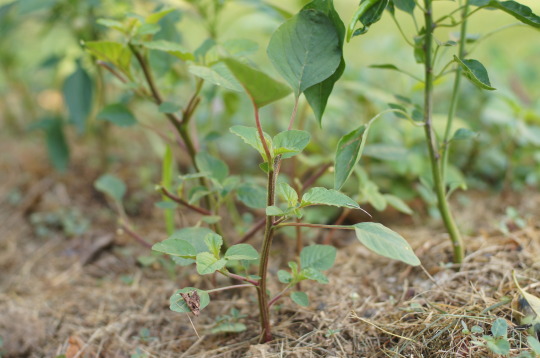
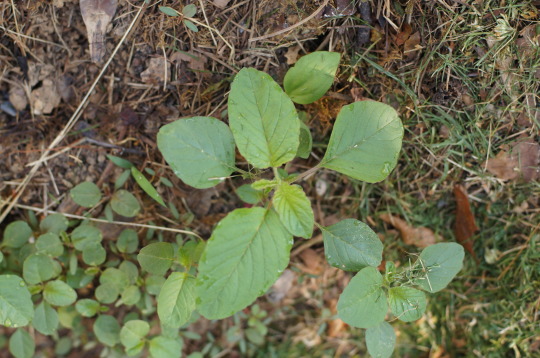
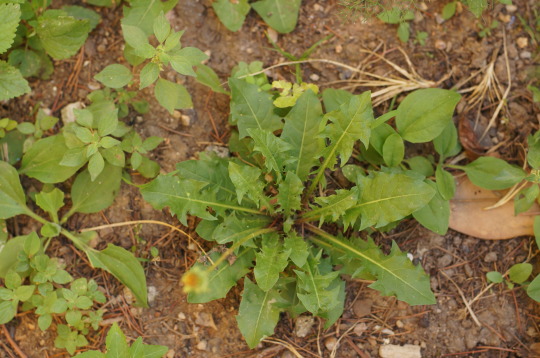

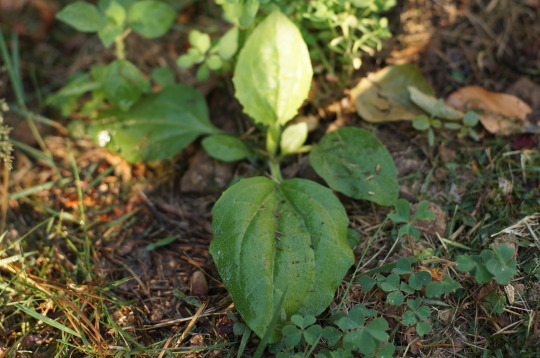
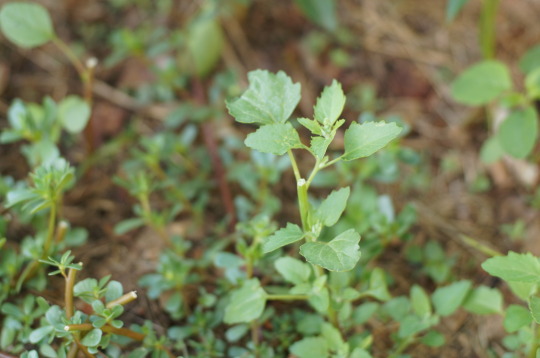
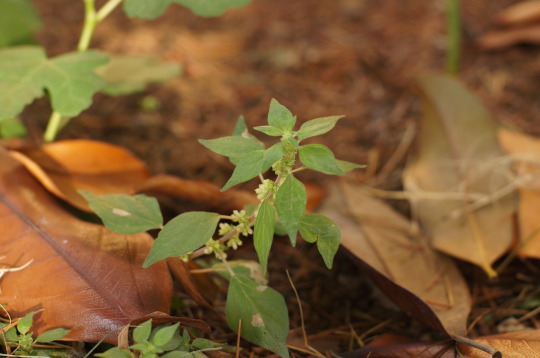


Bahçenin Yabani Misafirleri // The wild guests of the garden
1.İlk sıra // First row: Amaranthus albus- Horozibiği (ilk sıra) // Prostate Pigweed
2.Taraxacum officinale- Karahindiba // Dandelion
3.Portulaca oleracea- Semizotu // Purslane
4.Plantago major-Sinirli ot // Broadleaf Plantain
5.Chenopodium album- Sirken // Fat Hen, goosefoot
6.Parietaria officinalis-Duvar fesleğeni,yapışkan ot,bere otu // Pellitory of the wall
7.Hypericum perforatum- Sarı kantaron // St.John’s Wort
8.Mentha pulegium-Yarpuz // Pennyroyal
#wild plants#wild herb#edible plants#pennyroyal#hypericum perforatum#plantago major#taraxacum officinale#dandelion#amaranth#amaranthus albus#chenopodium album#parietaria officinalis#mentha pulegium#yabani otlar#yenebilir otlar
2 notes
·
View notes
Text
Eating Weeds: Lambsquarters

Last year during the Summer of Weeds I inadvertently wrote about several edible weeds, one of which I even ate. It’s not surprising that so many weeds are edible; there are plenty of plants out there – both native and introduced – that are, despite the fact that most of us stick with whatever is made available at the grocery store. Some edible weeds, dandelion included, were once commonly grown…
View On WordPress
#basil#Chenopodium album#crop wild relatives#eating weeds#edible plants#edible weeds#foraging#introduced plants#introduced species#lamb&039;s quarters pesto#lambsquarters pesto#pesto#pine nuts#recipes#Summer of Weeds#weeds
25 notes
·
View notes
Text
Le chénopode blanc - "mauvaise herbe" comestible
Le chénopode blanc – “mauvaise herbe” comestible
Si vous avez un potager il y a de grandes chances que vous connaissez le chénopode blanc. Beaucoup de jardiniers le considèrent comme mauvaise herbe et l’arrachent dès qu’il apparaît. Pour ma part, je le salut chaleureusement, je le laisse pousser et je me régale d’un légume excellent qui ne m’a coûté pas un sou ni un geste supplémentaire avant de pouvoir le récolter. Le bonus gratuit du…

View On WordPress
0 notes